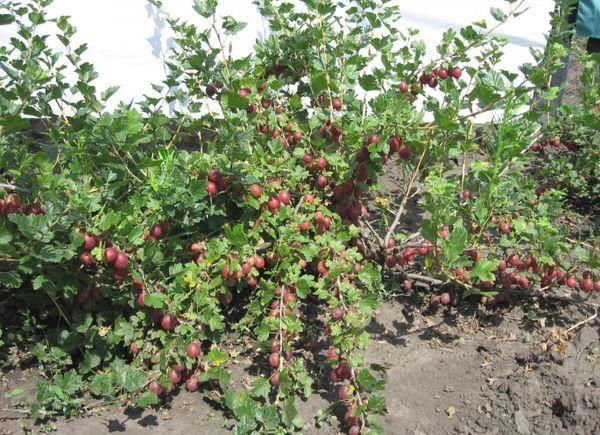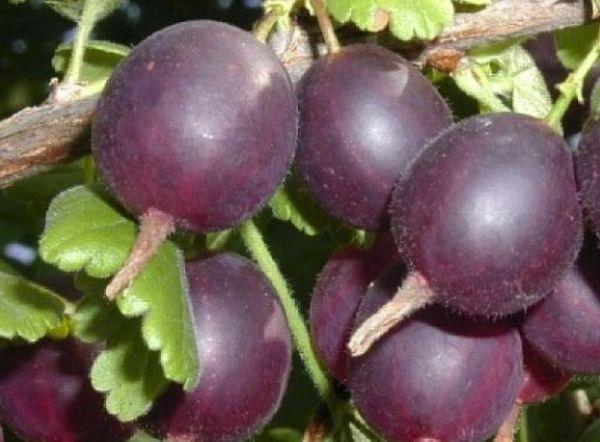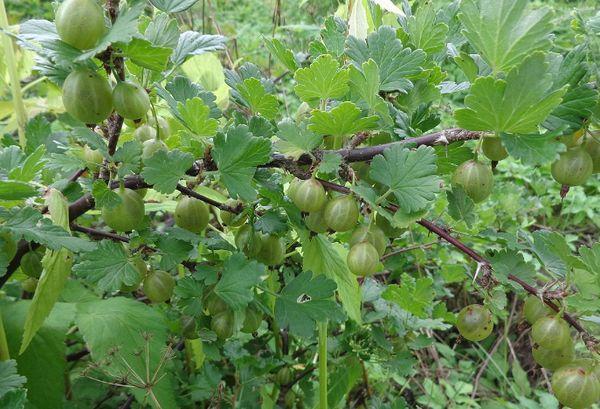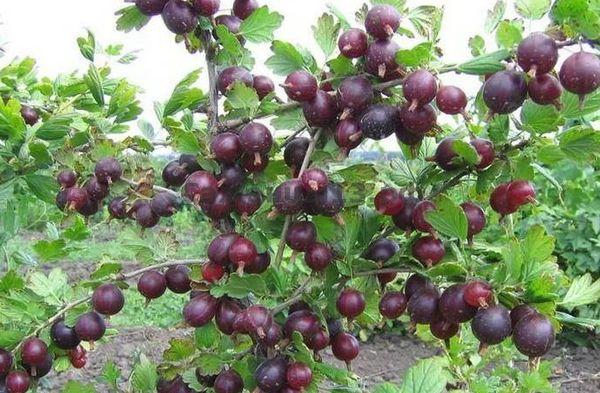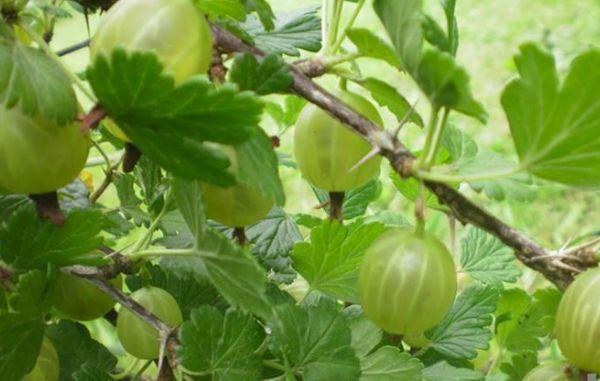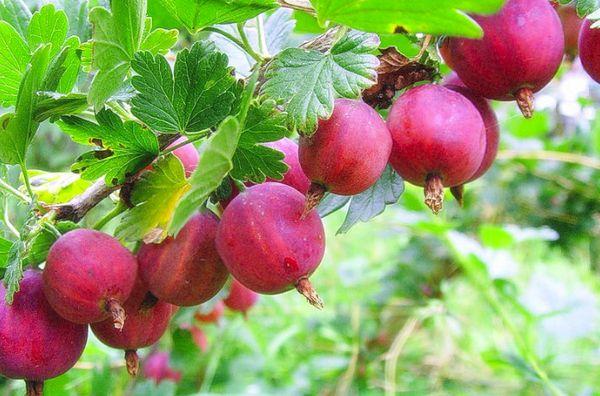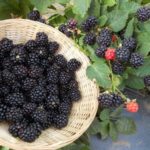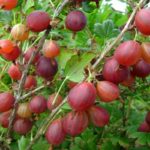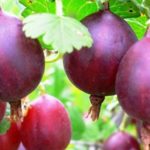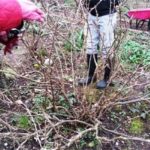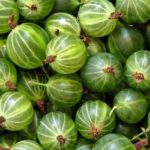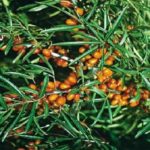Gooseberries are a tasty, healthy berry from which you can prepare many delicious dishes. But when it comes to harvesting in the summer, most gardeners try to wear thicker gloves. The thorns on the gooseberry bushes are so sharp that scratches on the legs and arms have to be treated after picking. Thanks to breeders, it has become possible to grow varieties of thornless gooseberries or those with weakly thorned shoots.
- Features of thornless gooseberry
- Is it worth planting thornless gooseberry bushes in the garden: advantages and disadvantages of the variety
- Nuances of growing and care
- The best varieties of gooseberries without thorns
- For the middle zone and Moscow region
- Popular varieties for the Urals with descriptions
Features of thornless gooseberry
Gooseberry is a small shrub up to 1.5 m in height and 2 m in width, with a powerful root system extending deep into the soil up to 1.5 m. Buds are formed on the roots, from which green shoots grow; at the base of the leaves there are sharp tripartite or simple thorns . Brown or dark gray bark gradually forms on the branches and peels off. The leaves are light green, pubescent on the petioles, the edges are serrated with three to five lobes. The flowers are small, green or red, bisexual, formed in the axils of the leaves one, two or three. When they bloom, they form a fruit - an oval or spherical berry of green, yellow or brown color.
Common gooseberry (Ribes uva—crispa, Grossuluaria) belongs to the Currant genus, was first mentioned in the 1500s, and has been known for its beneficial properties since ancient times.
Unfortunately, it has not yet been possible to completely eradicate the sharp thorns (thorns) on gooseberry branches. Thanks to breeding work carried out by specialists on crossing American species and varieties from Europe, it was possible to create thornless gooseberries. But these varieties have their own characteristics:
- Selected varieties with thorns that fall off during fruit set.
- Thorns cover only old shoots.
- There are thorns, but there are few of them and they are less sharp.
- They appear and disappear depending on the chosen location, agricultural techniques for caring for it, its cultivation and the age of the plant branches.
Many varieties of thornless gooseberries have been sectioned by foreign and Russian scientists. Therefore, they have become very common among Russian gardeners and are adapted to frequently changing, harsh conditions.
Is it worth planting thornless gooseberry bushes in the garden: advantages and disadvantages of the variety
Inexperienced gardeners will ask themselves: is it worth planting thornless gooseberries in the garden, what advantages and disadvantages do they have over older species?
The main advantage of the new thornless varieties of gooseberries is considered to be the shedding of thorns before fruiting or their partial absence, which allows gardeners to easily harvest the crop without injury. It is also believed that these varieties are more resistant to sudden frosts, frosts and adverse weather changes, are less affected by diseases, and have a more pronounced taste.
Gooseberries without thorns have minor drawbacks; the bushes have a more spreading crown, and some need to be pruned frequently.
Therefore, the question can be answered unequivocally. Yes, it is worth planting gooseberry varieties without thorns, as they are easy to care for, frost-resistant and convenient for picking berries. And one more advantage that was passed on to thornless varieties from American parents is resistance to powdery mildew.
Nuances of growing and care
To successfully cultivate thornless gooseberries and obtain a bountiful harvest, it is necessary to choose the right place, prepare it for planting and follow the agricultural practices of planting and growing.
Selecting a location:
- Sunny or with some shade during the day.
- No drafts.
- Eastern, southern side of the site.
Seat:
- Soil: black soil, sandy loam, loamy. Wetlands and areas with high acidity are not suitable.
- pH level 5.2-6.7.
- In the new place, all weeds are removed, the soil is dug deep and loosened so that the soil is softer, lighter, and more breathable. Sand and peat can be added to clay soils.
It is better to select a seedling in a nursery:
- The seedling can be one, two, or three years old.
- Healthy, without obvious signs of disease, damage by rodents or other pests, rot, or breakage.
- Leaves are rich green.
- The root when cut is white, flexible, elastic.
Boarding time:
- Autumn, end of September - first half of October in the middle zone, in the south, southwest, southeast, in the Moscow region.
- Spring, April - first ten days of May: northern regions, the Urals, Siberia.
Stages of planting gooseberries without thorns:
- For a day, place the seedlings in a bucket of water or diluted growth and root formation stimulator.
- Mark the planting pattern on the prepared area. The distance between rows is 1.5-2 m, between bushes 1.3-1.5 m.
- The pit is 35-45 cm deep, diameter 35-50 cm.
- If the soil is heavy and underground water is close, then dig a hole to a depth of 50 cm, lay a layer of expanded clay or broken brick drainage on the bottom, and sprinkle a layer of sand on top.
- If the soil is black soil or loam, then water the hole with 4-6 liters of water before planting the seedling.
- Then, up to 100 g of nitroammophoska is poured into the hole under the bush.
- The seedling is buried no more than 4 cm from the root collar. If planted deeper, the root will grow higher, since gooseberries reproduce vegetatively.
- Sprinkle it with a mixture of soil, ash, and rotted manure.
- Leave a hole around the bush to retain water.
- Water the hole with 5-6 liters of water.
- Mulch the top with rotted manure and pine needles if planting took place in the fall.
Caring for the bushes is simple, watering 10-12 liters per bush once every 2-3 weeks. During the period of berry ripening, irrigation is stopped.
Feeding after planting with fertilizers is carried out after 1.5-2 years. In spring, you can use fertilizers with nitrogen, phosphorus, and potassium. During the flowering period, urea or infusion of weeds.In the fall, mulch the soil around the gooseberries with peat, manure, and ash. In summer and autumn, the soil around is mulched in the form of fertilizer with mowed green manure, which has a positive effect on the growth and fruiting of bushes.
Pruning is carried out in the fall to form new shoots during the growth period in the spring. Cut the skeletal branches into 1-2 buds facing the inside of the bush if the branches droop inside the bush. If the branches are erect, then cut off 1 outer bud.
In the spring, formative pruning is carried out before the active growing season begins; growths and branches that thicken the bush are trimmed with pruning shears. Every 8-10 years you need to carry out anti-aging pruning, cutting off all old shoots.
Thornless gooseberry varieties are almost not attacked by insects and rodent pests and various diseases, but in spring and autumn they require preventive spraying with fungicides and insecticides.
The best varieties of gooseberries without thorns
Breeding work to develop varietal varieties of gooseberries has been carried out for more than 50 years, but the best are considered to be:
- Honey with fruits of amber-yellow color, with a high degree of sugar accumulation, very sweet, with a high degree of resistance to frost and average resistance to diseases. Berries with honey flavor are mid-season.
- Harlequin - mid-season, red-cherry fruits, medium size, high-yielding. It tolerates severe frosts down to -35 without damage, is not attacked by pests and is almost never affected by ashtray.
- Commander (Vladil) - fruits of a dark shade, red-brown, sweet-sour taste, long fruiting period, ripens by early August.
- Grushenka - the fruits are large, their color is red-violet, with a high degree of sugar accumulation, the taste is slightly sour. Fruiting period is medium late.High frost resistance and immunity to diseases.
- Lights of Krasnodar - medium late ripening of carmine-colored fruits, sweet and sour, yield up to 1 bucket per bush. Highly winter-hardy. Resistant to fungi.
- Kolobok - red with a raspberry tint, fruits from 3 to 8 g, sweetness more than 8%, acidity up to 3%, balanced taste, delicate, medium fruiting period. High resistance to powdery mildew, gray rot, anthracnose.
- Emerald - fruits from 3 to 8 g of emerald color, translucent in the sun, the taste is bright, richly sweet, with a slight sourness. High resistance to frost and diseases. The yield is more than 7.5 t/ha, from 1 bush to 1.5-2 buckets.
- Krasen - ripens in the middle period, the berries are green in color. Medium-large, up to 5 g, sweet-sour taste. Often affected by fungi. Frost resistance is high.
For each region, breeders recommend certain gooseberry varieties that would meet climatic conditions. This list includes the most popular and best varieties: Malachite, Sirius, Northern Captain, Chelyabinsky, Invicta, Uralsky, Orlyonok, African, Yantarny, Senator.
For the middle zone and Moscow region
- Russian yellow is a large berry, up to 8 g, bright yellow in color, with a pleasant sweet taste, sugar accumulation more than 9%, with a light aroma. Highly winter-hardy. Highly resistant to fungi, ash and pests. Requires formative pruning. Productivity is high, up to 9 t/ha. In the absence of care and watering, it produces a small harvest. Average ripening period.
- Invicta - yield up to 1.5 buckets per bush, more than 8.5 t/ha, large-fruited, up to 8.5 g. Variety with yellow-green berries, sugar accumulation 8%, acid 2.6%. Favorably tolerates sharp temperature fluctuations, frosts down to -30.Ripens early, almost does not suffer from fungal diseases.
- Malachite - large, malachite-colored fruits, up to 6.5 g, blush from the sun is allowed, with a sweet and sour taste, ripens by the end of July. Drought resistance is high. Favorably tolerates sudden temperature changes. Resistant to fungi and other diseases. Highly winter-hardy variety.
- Eaglet - fruits of dark purple, black color, with a sweet and sour taste. The bushes are high-yielding, up to 1.5 buckets per bush, and tolerate low temperatures, frosts down to -30, sudden changes in weather, and frosts. Not exposed to diseases. Ripens at the end of July.
- African - gooseberry with non-thorny branches and with fruits of different sizes (small and medium 3-5 g), dark purple, almost black in color, sweet berries with a slight aftertaste, ripens by the end of July. Up to 1 bucket of fruit is removed from the bush. High winter hardiness, but weak resistance to anthracnose, not damaged by ashtray.
- Northern captain - berries up to 4 g, medium-sized, purple-burgundy in color in the sun, almost black, with a high proportion of sugar accumulation, with a slight sourness. The yield is more than 11t/ha, ripens by the end of July - in the first ten days of August. Resistant to dry and frosty weather down to -30.
- Chelyabinsk slightly prickly - medium-sized berries, up to 5.5 g, dark cherry color, sweet and sour. Winter-hardy variety. The bushes are resistant to most diseases, but are often susceptible to ash. The ripening period is average.
- Thornless gooseberries are medium-large fruits of raspberry-red color, very sweet in taste, with a slight sourness. Productivity is average. Resistant to frost, frost down to -30, drought and powdery mildew.
- The gooseberry variety Sirius is described in a large number of sources, because it is one of the most frequently cultivated among gardeners in central Russia. Fruits up to 7.5 g are burgundy-brown in color, yield up to 1.5-2 buckets per bush. Highly winter-hardy. Drought resistance is high, but weak to powdery mildew.
Popular varieties for the Urals with descriptions
- The Ural thornless gooseberry has highly developed shoots, they grow quickly. The fruits are green, sweet and sour, large, the yield is high, but overripe berries fall off. The ripening period is average. It tolerates temperature drops down to -35, dry weather, and sudden temperature changes. Almost no pests attack; disease resistance is average.
- Senator (Consul) - medium-sized carmine-colored fruits, 4.5-7 g, sweet and sour, ripens by the end of July, large harvest, up to 2 buckets. Highly winter-hardy, sometimes affected by powdery mildew diseases.
- Amber - the berries are large and medium-sized, yellow-green, sometimes amber in color, sweet with a slight sourness. The variety is resistant to frosts down to -40, to sudden changes in weather, drought and frost. The productivity is high, the fruits do not fall off.
Gooseberries have a high ability to tolerate long winters, sharp temperature fluctuations, frosts down to -30, -40, but it is better to cover them with dry leaves or straw for the winter.


